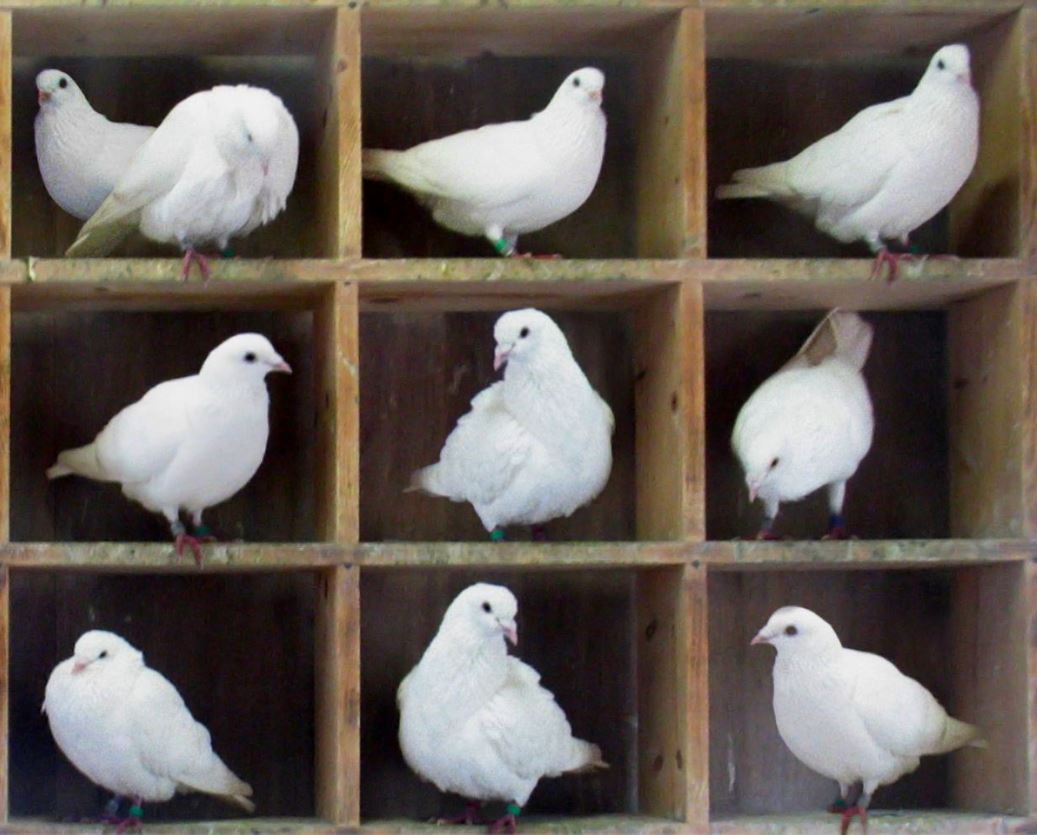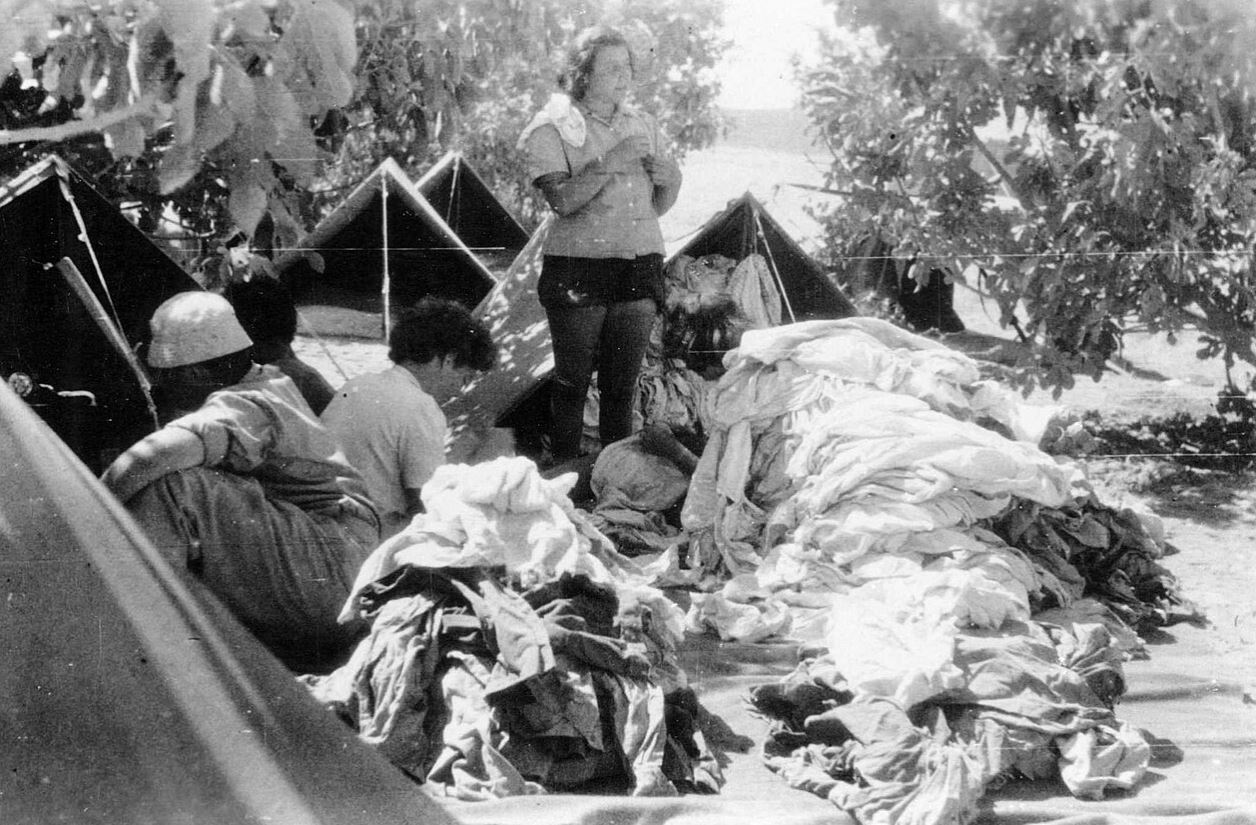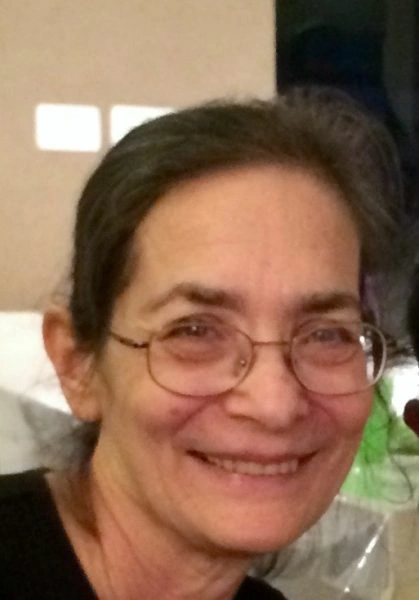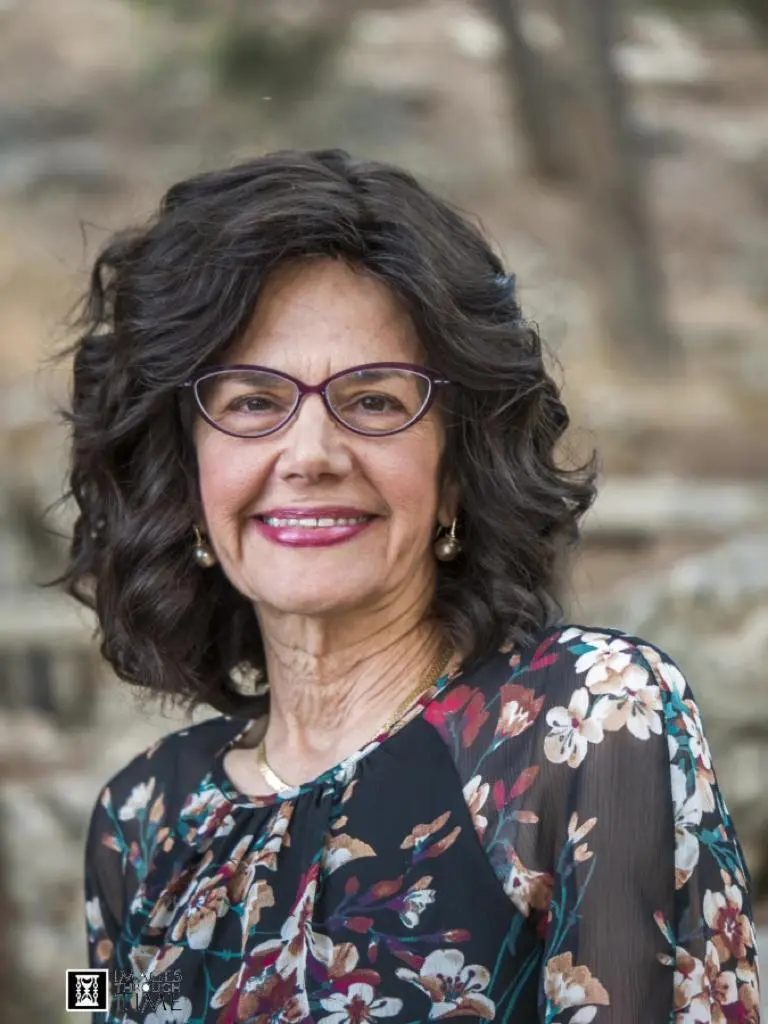The details of other types of sacrifices are discussed and the laws are derives from verses in the Torah.
Masechet Zevachim
Masechet Zevachim is sponsored by Esther Kremer in loving memory of her father, Manny Gross on his third yahrzeit. “He exemplified a path of holiness and purity, living with kedushah in his everyday life.”
This month’s learning is sponsored by Beth Balkany in honor of their granddaughter, Devorah Chana Serach Eichel. “May she grow up to be a lifelong learner.”
This month’s learning is dedicated in memory of Rabbi Dr. Raymond Harari z”l, on his 1st yahrzeit. As an educator, principal of Yeshiva of Flatbush, and community rabbi, he inspired thousands with his wisdom, warmth, and unwavering commitment to Torah.
This week’s learning is sponsored by Ruth and David Kahan in honor of Dr. Jody Dushay and Prof. Paul Gompers. “In gratitude for the ongoing and incredibly gracious hospitality!”
Want to dedicate learning? Get started here:

Masechet Zevachim
Masechet Zevachim is sponsored by Esther Kremer in loving memory of her father, Manny Gross on his third yahrzeit. “He exemplified a path of holiness and purity, living with kedushah in his everyday life.”
This month’s learning is sponsored by Beth Balkany in honor of their granddaughter, Devorah Chana Serach Eichel. “May she grow up to be a lifelong learner.”
This month’s learning is dedicated in memory of Rabbi Dr. Raymond Harari z”l, on his 1st yahrzeit. As an educator, principal of Yeshiva of Flatbush, and community rabbi, he inspired thousands with his wisdom, warmth, and unwavering commitment to Torah.
This week’s learning is sponsored by Ruth and David Kahan in honor of Dr. Jody Dushay and Prof. Paul Gompers. “In gratitude for the ongoing and incredibly gracious hospitality!”
Delve Deeper
Broaden your understanding of the topics on this daf with classes and podcasts from top women Talmud scholars.
New to Talmud?
Check out our resources designed to help you navigate a page of Talmud – and study at the pace, level and style that fits you.
The Hadran Women’s Tapestry
Meet the diverse women learning Gemara at Hadran and hear their stories.
Zevachim 55
גְּמָ׳ מְנָא לַן דְּבָעֵי צָפוֹן? דְּתָנֵי רַבָּה בַּר רַב חָנָן קַמֵּיהּ דְּרָבָא: ״וַעֲשִׂיתֶם שְׂעִיר עִזִּים אֶחָד לְחַטָּאת״ – מָה חַטָּאת בַּצָּפוֹן, אַף שַׁלְמֵי צִבּוּר בַּצָּפוֹן.
GEMARA: From where do we derive that the communal peace offerings, i.e., the two sheep brought on Shavuot, require slaughter in the north of the Temple courtyard? The Gemara answers: As Rabba bar Rav Ḥanan taught before Rava: The passage in the Torah discussing the offerings of Shavuot states: “And you shall offer one he-goat for a sin offering, and two male sheep in their first year for a sacrifice of peace offerings” (Leviticus 23:19). The peace offerings are juxtaposed with the sin offering. Just as the sin offering must be slaughtered in the north of the Temple courtyard, so too, communal peace offerings must be slaughtered in the north of the Temple courtyard.
אֲמַר לֵיהּ רָבָא: וְכִי חַטָּאת מֵהֵיכָן לָמְדָה – מֵעוֹלָה; דָּבָר הַלָּמֵד בְּהֶיקֵּשׁ חוֹזֵר וּמְלַמֵּד בְּהֶיקֵּשׁ?!
Rava said to him: But from where is the requirement to slaughter a sin offering in the north of the Temple courtyard derived? It is derived from its juxtaposition with a burnt offering, as the verse states: “Speak to Aaron and to his sons, saying: This is the law of the sin offering: In the place where the burnt offering is slaughtered shall the sin offering be slaughtered before the Lord; it is most holy” (Leviticus 6:18). In the realm of consecrated matters, can a matter derived via a juxtaposition then teach its halakha via a juxtaposition? The Gemara (49b) demonstrates that it cannot.
אֶלָּא מִדְּתָנֵי רַב מָרִי בְּרֵיהּ דְּרַב כָּהֲנָא: ״עַל עֹלֹתֵיכֶם וְעַל זִבְחֵי שַׁלְמֵיכֶם״ – מָה עוֹלָה קׇדְשֵׁי קָדָשִׁים, אַף זִבְחֵי שַׁלְמֵי צִבּוּר קׇדְשֵׁי קָדָשִׁים; מָה עוֹלָה בַּצָּפוֹן, אַף זִבְחֵי שַׁלְמֵי צִבּוּר בַּצָּפוֹן.
Rava explains: Rather, the source that communal peace offerings must be slaughtered in the north of the Temple courtyard is derived from that which Rav Mari, son of Rav Kahana, teaches: The verse states: “Also in the day of your gladness, and in your appointed seasons, and in your New Moons, you shall blow with the trumpets over your burnt offerings, and over your peace offerings; and they shall be to you for a memorial before your God: I am the Lord your God” (Numbers 10:10). This verse directly juxtaposes burnt offerings with communal peace offerings. Just as burnt offerings are offerings of the most sacred order, so too, communal peace offerings are offerings of the most sacred order. Furthermore, just as a burnt offering must be slaughtered in the north of the Temple courtyard, so too, communal peace offerings must be slaughtered in the north of the Temple courtyard.
אֶלָּא הֶיקֵּשָׁא קַמָּא לְמַאי אֲתָא? כִּי חַטָּאת – מָה חַטָּאת אֵינָהּ נֶאֱכֶלֶת אֶלָּא לְזִכְרֵי כְהוּנָּה, אַף זִבְחֵי שַׁלְמֵי צִבּוּר לְזִכְרֵי כְהוּנָּה.
The Gemara asks: Rather, what halakha does the first juxtaposition between communal peace offerings and the he-goat sin offering come to teach? The Gemara answers: It teaches that the halakhot of communal peace offerings are like the halakhot of a sin offering. Just as a sin offering is eaten only by male priests, so too, communal peace offerings are eaten only by male priests.
אֲמַר לֵיהּ אַבָּיֵי: אִי הָכִי, גַּבֵּי אֵיל נָזִיר דִּכְתִיב: ״וְהִקְרִיב אֶת קׇרְבָּנוֹ לַה׳ כֶּבֶשׂ בֶּן שְׁנָתוֹ תָמִים אֶחָד לְעֹלָה, וְכַבְשָׂה אַחַת בַּת שְׁנָתָהּ [תְּמִימָה] לְחַטָּאת, וְאַיִל אֶחָד [תָּמִים] לִשְׁלָמִים״ – הָכִי נָמֵי נֵימָא דְּהִקִּישׁ הַכָּתוּב לְחַטָּאת: מָה חַטָּאת אֵינָהּ נֶאֱכֶלֶת אֶלָּא לְזִכְרֵי כְהוּנָּה, אַף אֵיל נָזִיר נָמֵי אֵינוֹ נֶאֱכָל אֶלָּא לְזִכְרֵי כְהוּנָּה?!
Abaye said to Rava: If so, then with regard to a nazirite’s ram, concerning which it is written in the verse: “And he shall present his offering to the Lord, one he-lamb in its first year without blemish for a burnt offering, and one ewe-lamb in its first year without blemish for a sin offering, and one ram without blemish for a peace offering” (Numbers 6:14), so too shall we say that the Torah juxtaposed the nazirite’s ram with a sin offering of a nazirite to teach that just as a sin offering is eaten only by male priests, so too, a nazirite’s ram is eaten only by male priests? As the next mishna states, a nazirite’s ram may be eaten by every ritually pure Jew.
הָכִי הַשְׁתָּא?! הָתָם, כֵּיוָן דִּכְתִיב ״וְלָקַח הַכֹּהֵן אֶת הַזְּרֹעַ בְּשֵׁלָה מִן הָאַיִל״ – מִכְּלָל דְּכוּלֵּיהּ בְּעָלִים אָכְלִי לֵיהּ.
Rava answers: How can these cases be compared? There, with regard to the nazirite’s ram, since it is written: “And the priest shall take the foreleg of the ram when it is cooked” (Numbers 6:19), by inference one can deduce that the owner may eat all of the remaining portions of the animal.
זְרוֹעַ בְּשֵׁלָה מִיהָא לָא לִיתְאֲכִיל אֶלָּא לְזִכְרֵי כְהוּנָּה! קַשְׁיָא.
The Gemara asks: If so, in any event, the cooked foreleg of the nazirite’s ram should be eaten only by male priests. The mishna states that the cooked foreleg may be eaten by priests, their wives, and their slaves. The Gemara concedes: This is difficult. Based on its juxtaposition with the sin offering of a nazirite, the halakha should be that only the male priests may eat it, yet that is not the case.
וְאִיבָּעֵית אֵימָא: קׇדְשֵׁי אִקְּרִי, קׇדְשֵׁי קֳדָשִׁים לָא אִיקְּרוּ. וְאֶלָּא לְמַאי הִלְכְתָא אִיתַּקַּשׁ? אָמַר רָבָא: שֶׁאִם גִּלַּח עַל אֶחָד מִשְּׁלׇשְׁתָּן – יָצָא.
The Gemara offers another explanation: And if you wish, say that the foreleg of the nazirite’s ram is called sacred, but it is not called an offering of the most sacred order. Therefore, it cannot be juxtaposed with the sin offering of a nazirite in this regard. The Gemara asks: But rather, with regard to what halakha is the nazirite’s ram juxtaposed with the sin offering of a nazirite? Rava says: It is juxtaposed to teach that if the nazirite shaved after the sacrifice of any one of the three offerings, he has fulfilled his obligation after the fact.
מַתְנִי’ הַתּוֹדָה וְאֵיל נָזִיר, קָדָשִׁים קַלִּים, שְׁחִיטָתָן בְּכׇל מָקוֹם בָּעֲזָרָה, וְדָמָן טָעוּן שְׁתֵּי מַתָּנוֹת שֶׁהֵן אַרְבַּע, וְנֶאֱכָלִין בְּכׇל הָעִיר, לְכׇל אָדָם, בְּכׇל מַאֲכָל, לְיוֹם וָלַיְלָה עַד חֲצוֹת. הַמּוּרָם מֵהֶם כְּיוֹצֵא בָּהֶן, אֶלָּא שֶׁהַמּוּרָם נֶאֱכָל לַכֹּהֲנִים, לִנְשֵׁיהֶם וְלִבְנֵיהֶם וּלְעַבְדֵיהֶם.
MISHNA: The thanks offering and nazirite’s ram are offerings of lesser sanctity. Their slaughter is anywhere in the Temple courtyard, and their blood requires two placements that are four, and they are eaten throughout the city of Jerusalem, by every person, i.e., any ritually pure Jew, prepared in any manner of food preparation, on the day the offering was sacrificed and during the night that follows, until midnight. The status of the portion that is separated from them and given to the priests is similar to theirs; but the portion that is separated is eaten by the priests, by their wives, and by their children, and by their slaves.
גְּמָ׳ תָּנוּ רַבָּנַן: ״אֶת חֲזֵה הַתְּנוּפָה וְאֵת שׁוֹק הַתְּרוּמָה תֹּאכְלוּ בְּמָקוֹם טָהוֹר״ – אָמַר רַבִּי נְחֶמְיָה: וְכִי רִאשׁוֹנִים בְּטוּמְאָה אֲכָלוּם?!
GEMARA: The Sages taught in a baraita: The verse states with regard to the priests: “And the breast of waving and the thigh of heaving you shall eat in a pure place; you, and your sons, and your daughters with you; for they are given as your due, and your sons’ due, out of the peace offerings of the children of Israel” (Leviticus 10:14). Rabbi Neḥemya said: But did they eat the first offerings, mentioned in the previous two verses, in a place of impurity? The previous verses make reference to the remainder of the meal offering, which also had to be eaten in a pure place.
אֶלָּא טָהוֹר – מִכְּלָל שֶׁהוּא טָמֵא; טָהוֹר מִטּוּמְאַת מְצוֹרָע, וְטָמֵא מִטּוּמְאַת זָב. וְאֵיזֶה זֶה? זֶה מַחֲנֵה יִשְׂרָאֵל.
Rather, by inference, the word “pure” in this context is referring to a place that is to some degree ritually impure, but pure in some respects. The priest must eat in a place that is pure due to the impurity of a leper, but it may be a place that is impure due to the impurity of a man who experiences a gonorrhea-like discharge [zav]. And which place is this? This is the Israelites’ camp in the wilderness, and, once the Temple was built in Jerusalem, the entire city of Jerusalem. A zav could remain in these places, but not a leper. This is the source for the halakha in the mishna that these offerings may be eaten anywhere in Jerusalem.
וְאֵימָא טָהוֹר מִטּוּמְאַת זָב וְטָמֵא מִטּוּמְאַת מֵת – וְאֵיזֶה זֶה, זֶה מַחֲנֵה לְוִיָּה!
The Gemara asks: But why not say that the word “pure” is referring to a place which is pure from the impurity of a zav and impure due to ritual impurity imparted by a corpse? And which place is this? This is the Levites’ camp in the wilderness, and, once the Temple was built in Jerusalem, the Temple Mount.
אָמַר אַבָּיֵי, אָמַר קְרָא: ״וַאֲכַלְתֶּם אֹתָהּ בְּמָקוֹם קָדוֹשׁ״ – אוֹתָהּ בְּמָקוֹם קָדוֹשׁ וְלֹא אַחֶרֶת בְּמָקוֹם קָדוֹשׁ, אַפְּקַהּ לְמַחֲנֵה לְוִיָּה; הֲדַר כְּתִיב: ״בְּמָקוֹם טָהוֹר״ – אַפְּקַהּ לְמַחֲנֵה יִשְׂרָאֵל.
Abaye says that the verse states with regard to the meal offering: “And you shall eat it in a sacred place” (Leviticus 10:13). The word “it” is a restriction, teaching that one must eat “it,” i.e., the meal offering, in a sacred place, i.e., in the camp of the Divine Presence, but one is not required to eat another offering, i.e., the breast of waving and the thigh of heaving, in a sacred place. This removes the portions from the camp of the Divine Presence, to be eaten in the Levites’ camp. Then it is written: “You shall eat in a pure place,” which removes the portions from the Levites’ camp, to be eaten in the Israelites’ camp.
רָבָא אָמַר: ״אוֹתָהּ בְּמָקוֹם קָדוֹשׁ״ – וְלֹא אַחֶרֶת בְּמָקוֹם קָדוֹשׁ, אַפְּקַהּ לִגְמָרֵי. הֲדַר כְּתַב רַחֲמָנָא: ״תֹּאכְלוּ בִּמְקוֹם טָהוֹר״ – עָיְילָא לְמַחֲנֵה יִשְׂרָאֵל.
Rava says a different explanation: “It,” i.e., the meal offering, must be eaten in a sacred place, but one is not required to eat another offering, i.e., the breast of waving and the thigh of heaving, in a sacred place. This verse removes the portions completely from any pure place, and according to this stage of Rava’s interpretation, these portions may be eaten anywhere. Then the Merciful One wrote: “You shall eat in a pure place,” which brings it into the Israelites’ camp, which is a pure place, relative to everywhere outside it.
וְאֵימָא עַיְּילַאּ לְמַחֲנֵה לְוִיָּה! לַחֲדָא מְעַיְּילִינַן, לְתַרְתֵּי לָא מְעַיְּילִינַן.
The Gemara asks: But why not say that the verse brings it into the Levites’ camp, which is also referred to as pure? The Gemara answers: We bring it into one camp, adjacent to the area outside the encampment of the Jewish people, but we do not bring it into two camps.
אִי הָכִי, אַפּוֹקֵי נָמֵי – לַחֲדָא מַפְּקִינַן, לְתַרְתֵּי לָא מַפְּקִינַן! וְעוֹד, ״לֹא תוּכַל לֶאֱכוֹל בִּשְׁעָרֶיךָ״ כְּתִיב! אֶלָּא מְחַוַּורְתָּא כִּדְאַבָּיֵי.
The Gemara asks: If so, also with regard to removing it, why not say that we remove it to one place, but we do not remove it from two places? Accordingly, the initial derivation should be to eat it in the Israelites’ camp. And furthermore, it is written: “You may not eat within your gates the tithe of your grain, or of your wine, or of your oil, or the firstborn of your herd or of your flock, nor any of your vows which you vow, nor your gift offerings, nor the offering of your hand” (Deuteronomy 12:17). This verse negates the possibility that an offering may be eaten “in your gates,” i.e., outside of Jerusalem. Rather, it is clear that the source for the ruling of the baraita is in accordance with the explanation of Abaye.
מַתְנִי׳ שְׁלָמִים – קָדָשִׁים קַלִּים – שְׁחִיטָתָן בְּכׇל מָקוֹם בָּעֲזָרָה, וְדָמָן טָעוּן שְׁתֵּי מַתָּנוֹת שֶׁהֵן אַרְבַּע, וְנֶאֱכָלִין בְּכׇל הָעִיר, לְכׇל אָדָם, בְּכׇל מַאֲכָל, לִשְׁנֵי יָמִים וְלַיְלָה אֶחָד; הַמּוּרָם מֵהֶם כַּיּוֹצֵא בָּהֶם, אֶלָּא שֶׁהַמּוּרָם נֶאֱכָל לַכֹּהֲנִים, לִנְשֵׁיהֶם, וְלִבְנֵיהֶם, וּלְעַבְדֵיהֶם.
MISHNA: Peace offerings are offerings of lesser sanctity. Their slaughter is anywhere in the Temple courtyard, and their blood requires two placements that are four, and they are eaten throughout the city of Jerusalem, by every person, i.e., any ritually pure Jew, prepared in any manner of food preparation, for two days and one night, i.e., the day on which they are slaughtered, the following day, and the intervening night. The status of the portion that is separated from them and given to the priests is similar to theirs; but the portion that is separated is eaten by the priests, by their wives, and by their children, and by their slaves.
גְּמָ׳ תָּנוּ רַבָּנַן: ״וּשְׁחָטוֹ פֶּתַח אֹהֶל מוֹעֵד״; ״וְשָׁחַט אֹתוֹ לִפְנֵי אֹהֶל מוֹעֵד״; ״וְשָׁחַט אוֹתוֹ לִפְנֵי אֹהֶל מוֹעֵד״ –
GEMARA: The Sages taught in a baraita: With regard to cattle peace offerings, the verse states: “And he shall lay his hand upon the head of his offering, and slaughter it at the entrance of the Tent of Meeting” (Leviticus 3:2). With regard to sheep peace offerings the verse states: “And he shall lay his hand upon the head of his offering, and slaughter it before the Tent of Meeting” (Leviticus 3:8). With regard to goat peace offerings the verse states: “And he shall lay his hand upon the head of it, and slaughter it before the Tent of Meeting” (Leviticus 3:13).
לְהַכְשִׁיר אֶת כׇּל הָרוּחוֹת בְּקָדָשִׁים קַלִּים. קַל וָחוֹמֶר לַצָּפוֹן: וּמָה קׇדְשֵׁי קֳדָשִׁים, שֶׁלֹּא הוּכְשְׁרוּ בְּכׇל הָרוּחוֹת – הוּכְשְׁרוּ בַּצָּפוֹן; קָדָשִׁים קַלִּים, שֶׁהוּכְשְׁרוּ בְּכׇל הָרוּחוֹת – אֵינוֹ דִּין שֶׁהוּכְשְׁרוּ בַּצָּפוֹן?!
This repetition serves to render fit all directions of the Temple courtyard for the slaughter of offerings of lesser sanctity. From here one can derive an a fortiori inference to permit slaughter in the north of the Temple courtyard: Just as the rites of slaughtering offerings of the most sacred order, which are not rendered fit in all directions, are rendered fit in the north, with regard to the rites of slaughtering offerings of lesser sanctity, which are rendered fit in all directions, is it not logical that they are rendered fit in the north?
רַבִּי אֱלִיעֶזֶר אוֹמֵר: לֹא נֶאֱמַר הַכָּתוּב אֶלָּא לְהַכְשִׁיר צָפוֹן; שֶׁיָּכוֹל וַהֲלֹא דִּין הוּא: וּמָה קָדָשִׁים קַלִּים, שֶׁהוּכְשְׁרוּ בְּכׇל הָרוּחוֹת – לֹא הוּכְשַׁר מְקוֹמָן אֵצֶל קׇדְשֵׁי קָדָשִׁים; קׇדְשֵׁי קֳדָשִׁים, שֶׁלֹּא הוּכְשְׁרוּ אֶלָּא בַּצָּפוֹן – אֵינוֹ דִּין שֶׁלֹּא הוּכְשַׁר מְקוֹמָן אֵצֶל קָדָשִׁים קַלִּים?! תַּלְמוּד לוֹמַר: ״אֹהֶל מוֹעֵד״.
Rabbi Eliezer says: The repetition of the verse is stated only to render fit slaughter in the north. As one might have thought: And could this not be derived through logical inference? Just as with regard to offerings of lesser sanctity, whose slaughter is rendered fit in any direction, nevertheless their place is not rendered fit for the slaughter of offerings of the most sacred order, with regard to offerings of the most sacred order, whose slaughter is rendered fit only in the north, is it not logical that their place should not be rendered fit for the slaughter of offerings of lesser sanctity? Therefore, the verse states: “Tent of Meeting,” to teach that offerings of lesser sanctity may be slaughtered in the north.
בְּמַאי קָא מִיפַּלְגִי? תַּנָּא קַמָּא סָבַר: תְּלָתָא קְרָאֵי כְּתִיבִי; חַד לְגוּפֵיהּ – דְּנִיבְעֵי פֶּתַח אֹהֶל מוֹעֵד, וְחַד לְהַכְשִׁיר צְדָדִין, וְחַד לִפְסוֹל צִידֵּי צְדָדִין. וְצָפוֹן לָא אִיצְטְרִיךְ קְרָא.
The Gemara clarifies: With regard to what do they disagree? The first tanna holds that three verses are written. One verse serves to teach the halakha itself, that we require that the slaughter take place at the entrance of the Tent of Meeting. And one verse serves to render fit slaughter at the sides, i.e., the entire length of the Temple courtyard eastward from the entrance, and not only that part which is directly in front of the entrance. And one verse serves to disqualify the sides of the sides, i.e., those parts of the courtyard that are not in front of the entrance at all. And it was not necessary to have a verse teach the fitness of slaughtering in the north, as it can be derived via an a fortiori inference.
וְרַבִּי אֱלִיעֶזֶר סָבַר: חַד לְגוּפֵיהּ – דְּנִיבְעֵי פֶּתַח אֹהֶל מוֹעֵד, וְחַד לְהַכְשִׁיר צָפוֹן, וְחַד לְהַכְשִׁיר צְדָדִין. וְצִידֵּי צְדָדִין לָא אִיצְטְרִיךְ קְרָא.
And Rabbi Eliezer holds that one verse is necessary to teach the halakha itself, that we require slaughter at the entrance of the Tent of Meeting. And one verse serves to render fit slaughter in the north of the courtyard. And one verse serves to render fit slaughter at the sides of the courtyard. But according to him, it was not necessary to have a verse teach that the sides of the sides are not fit for the slaughter of the offering.
מַאי שְׁנָא הָכָא – דִּכְתִיב: ״פֶּתַח אֹהֶל מוֹעֵד״, וּמַאי שְׁנָא הָתָם – דִּכְתִיב: ״לִפְנֵי אֹהֶל מוֹעֵד״? קָא מַשְׁמַע לַן כִּדְרַב יְהוּדָה אָמַר שְׁמוּאֵל; דְּאָמַר רַב יְהוּדָה אָמַר שְׁמוּאֵל: שְׁלָמִים שֶׁשְּׁחָטָן קוֹדֶם שֶׁיִּפָּתְחוּ דַּלְתוֹת הַהֵיכָל – פְּסוּלִין, שֶׁנֶּאֱמַר: ״וּשְׁחָטוֹ פֶּתַח אֹהֶל מוֹעֵד״ – בִּזְמַן שֶׁהוּא פָּתוּחַ, וְלֹא בִּזְמַן שֶׁהוּא נָעוּל.
§ The Gemara asks: What is different here that it is written: “At the entrance to the Tent of Meeting” (Leviticus 3:2), and what is different there that it is written: “Before the Tent of Meeting” (Leviticus 3:8, 13)? The Gemara answers: This teaches us a matter in accordance with that which Rav Yehuda says that Shmuel says. As Rav Yehuda says that Shmuel says: Peace offerings that one slaughtered in the Temple before the doors of the Sanctuary were opened are disqualified, as it is stated with regard to peace offerings: “And he shall slaughter it at the entrance to the Tent of Meeting” (Leviticus 3:2), which teaches that it must be slaughtered when the entrance is open and serves as an actual entrance, and not when it is locked. As long as the entrance to the Tent of Meeting, or in the Temple the doors to the Sanctuary, remain closed, one may not sacrifice the peace offerings, and if they are sacrificed, they are disqualified.
אִיתְּמַר נָמֵי, אָמַר מָר עוּקְבָא בַּר חָמָא אָמַר רַבִּי יוֹסֵי בְּרַבִּי חֲנִינָא: שְׁלָמִים שֶׁשְּׁחָטָן קוֹדֶם שֶׁיִּפָּתְחוּ דַּלְתוֹת הַהֵיכָל – פְּסוּלִין, שֶׁנֶּאֱמַר: ״וּשְׁחָטוֹ פֶּתַח אֹהֶל מוֹעֵד״ – בִּזְמַן שֶׁפֶּתַח הַהֵיכָל פָּתוּחַ, וְלֹא בִּזְמַן שֶׁהוּא נָעוּל.
It was also stated: Mar Ukva bar Ḥama says that Rabbi Yosei, son of Rabbi Ḥanina, says: Peace offerings that one slaughtered before the doors of the Sanctuary were opened are disqualified, as it is stated in the verse: “He shall slaughter it at the entrance to the Tent of Meeting” (Leviticus 3:2). This means when the entrance of the Sanctuary is open, and not when it is locked.
בְּמַעְרְבָא מַתְנֵי הָכִי – אָמַר רַב יַעֲקֹב בַּר אַחָא אָמַר רַב אָשֵׁי: שְׁלָמִים שֶׁשְּׁחָטָן קוֹדֶם שֶׁיִּפָּתְחוּ דַּלְתוֹת הַהֵיכָל – פְּסוּלִים. וּבַמִּשְׁכָּן – קוֹדֶם שֶׁיַּעֲמִידוּ לְוִיִּם אֶת הַמִּשְׁכָּן, וּלְאַחַר שֶׁיְּפָרְקוּ לְוִיִּם אֶת הַמִּשְׁכָּן – פְּסוּלִים.
In the West, Eretz Yisrael, they teach this halakha like this: Rav Ya’akov bar Aḥa says that Rav Ashi says: Peace offerings that one slaughtered before the doors of the Sanctuary were opened are disqualified. And in the Tabernacle, which had no doors, peace offerings that were slaughtered before the Levites erected the Tabernacle or after the Levites dismantled the Tabernacle are disqualified.
פְּשִׁיטָא – מוּגָף, כְּנָעוּל דָּמֵי. וִילוֹן מַאי? אָמַר רַבִּי זֵירָא: הוּא עַצְמוֹ אֵין נַעֲשֶׂה אֶלָּא כְּפֶתַח פָּתוּחַ.
The Gemara comments: It is obvious that if the door is closed but not locked it has the same status as if it were locked. The Gemara asks: If there is a curtain covering the entrance, what is the halakha? Rabbi Zeira says: A curtain itself is made only to be used like an open entrance, and therefore it is not considered as if the entrance is closed.
גּוּבְהָא מַאי? תָּא שְׁמַע: דְּתַנְיָא, רַבִּי יוֹסֵי בְּרַבִּי יְהוּדָה אוֹמֵר: שְׁנֵי פִּשְׁפָּשִׁין הָיוּ בְּבֵית הַחֲלִיפוֹת, וְגוֹבְהָן שְׁמֹנָה; כְּדֵי לְהַכְשִׁיר אֶת הָעֲזָרָה כּוּלָּהּ לַאֲכִילַת קׇדְשֵׁי קָדָשִׁים, וְלִשְׁחִיטַת קָדָשִׁים קַלִּים.
The Gemara asks: What is the halakha if a tall item is blocking the entrance? The Gemara suggests: Come and hear a proof that a tall item does not render an entrance as closed, as it is taught in a baraita: Rabbi Yosei, son of Rabbi Yehuda, says: There were two wickets, i.e., openings, in the Chamber of Knives, and their height was eight cubits. The function of these openings was in order to render fit the entire Temple courtyard for the eating of offerings of the most sacred order, and to render fit all of the Temple courtyard for the slaughter of offerings of lesser sanctity. Due to the openings, the western area of the courtyard was considered to be “before the Tent of Meeting.”
מַאי, לָאו דְּאִיכָּא קַמַּיְיהוּ שְׁמוֹנֶה? לָא; דְּגָבְהוּ נִינְהוּ שְׁמוֹנֶה.
The Gemara explains the inference: What, is the reference to eight cubits not referring to the fact that in front of the wickets there was an obstruction eight cubits high? Nevertheless, the area outside of it is considered open to the Chamber of Knives. The Gemara answers: No, their height was eight cubits, i.e., the wickets themselves were eight cubits high.
מֵיתִיבִי: כׇּל הַשְּׁעָרִים שֶׁהָיוּ שָׁם – גּוֹבְהָן עֶשְׂרִים אַמָּה, וְרוֹחְבָּן עֶשֶׂר אַמָּה! פִּשְׁפָּשִׁין שָׁאנֵי.
The Gemara raises an objection to this explanation from a mishna (Middot 35a), which teaches: All the gates that were there, in the Temple, were twenty cubits high and ten cubits wide. If so, how could these wickets be only eight cubits high? The Gemara answers: The wickets are different, and they are not considered gates.
וְהָאִיכָּא צְדָדִין! דִּמְעַיֵּיל לְהוּ בְּקֶרֶן זָוִית.
The Gemara questions the ruling of the baraita. How did the wickets render fit the entire Temple courtyard? But there are the sides, i.e., to the north and south of the Chamber of Knives, and the wickets faced only to the west. The Gemara answers that they inserted the wickets in the corner of the Chamber, so that one opened to the northwest, and one to the northeast.
אֲחוֹרֵי בֵּית הַכַּפּוֹרֶת מַאי? תָּא שְׁמַע, דְּאָמַר רָמֵי בַּר רַב יְהוּדָה אָמַר רַב: לוּל קָטָן הָיָה אֲחוֹרֵי בֵּית הַכַּפּוֹרֶת, גָּבוֹהַּ שְׁמוֹנֶה אַמּוֹת; כְּדֵי לְהַכְשִׁיר אֶת הָעֲזָרָה לַאֲכִילַת קׇדְשֵׁי קָדָשִׁים, וְלִשְׁחִיטַת קָדָשִׁים קַלִּים. וְהַיְינוּ דִּכְתִיב: ״שְׁנַיִם לַפַּרְבָּר״. מַאי ״לַפַּרְבָּר״? אָמַר רַבָּה בַּר רַב שֵׁילָא, כְּמַאן דְּאָמַר: כְּלַפֵּי בַּר.
The Gemara asks: What is the halakha with regard to the area behind the Hall of the Ark Cover, i.e., behind the Sanctuary, from where one could not see the entrance of the Temple courtyard or the two wickets? The Gemara answers: Come and hear, as Rami bar Rav Yehuda says that Rav says: There was a small niche behind the Hall of the Ark Cover, which was eight cubits high. The function of this niche was in order to render fit the entire Temple courtyard for the eating of offerings of the most sacred order, and to render fit all of the Temple courtyard for the slaughter of offerings of lesser sanctity. And this is as it is written: “For the precinct westward, four at the causeway, and two at the precinct” (I Chronicles 26:18). What is the meaning of the term: “For the precinct [laparbar]”? Rabba bar Rav Sheila said: It is like one who says: Facing outward [kelappei bar].
אָמַר רַב יְהוּדָה אָמַר שְׁמוּאֵל: אֵין חַיָּיבִין מִשּׁוּם טוּמְאָה, אֶלָּא עַל
§ Rav Yehuda says that Shmuel says: One is liable for entering the Temple courtyard in a state of ritual impurity only with regard to




























